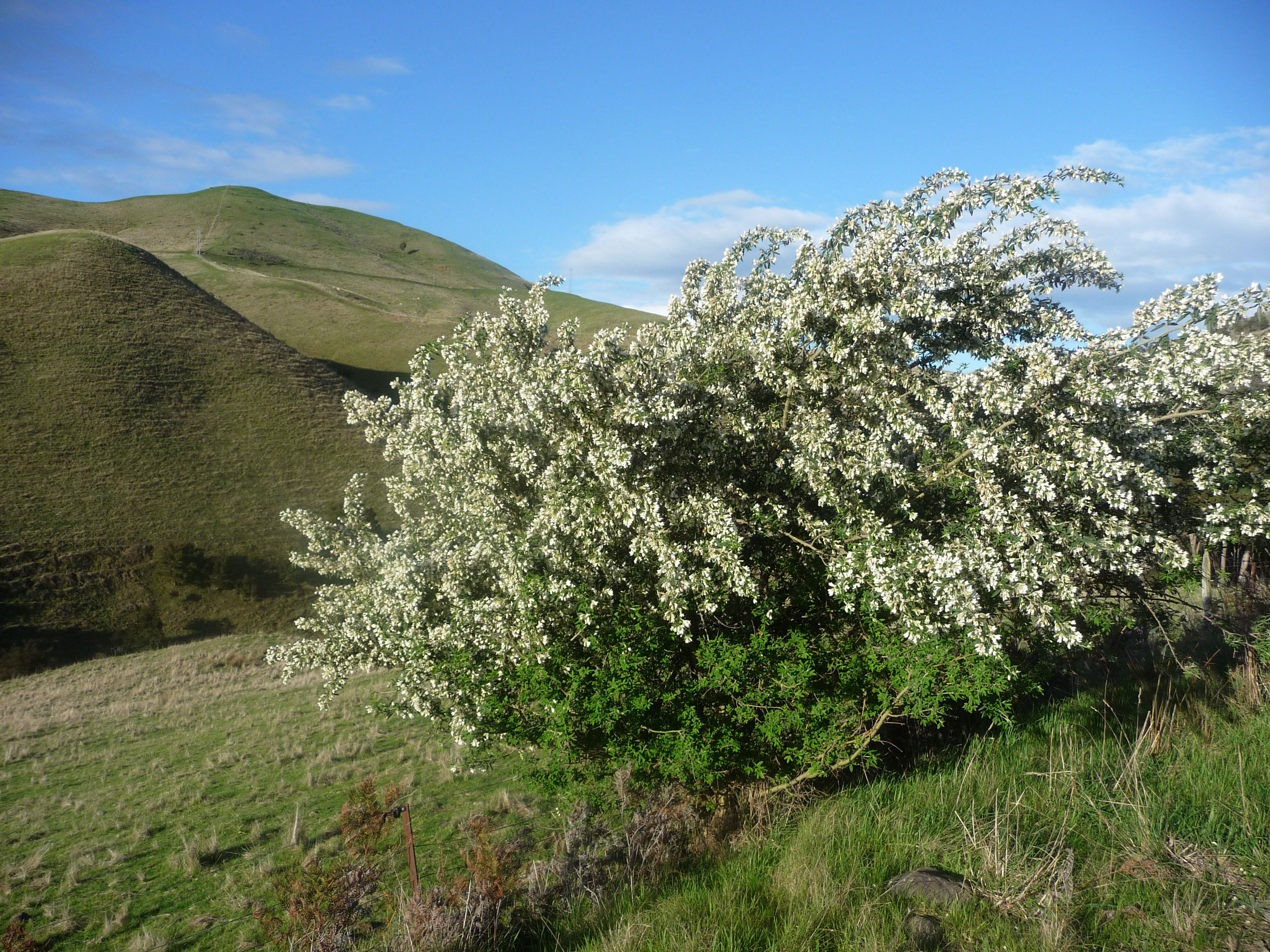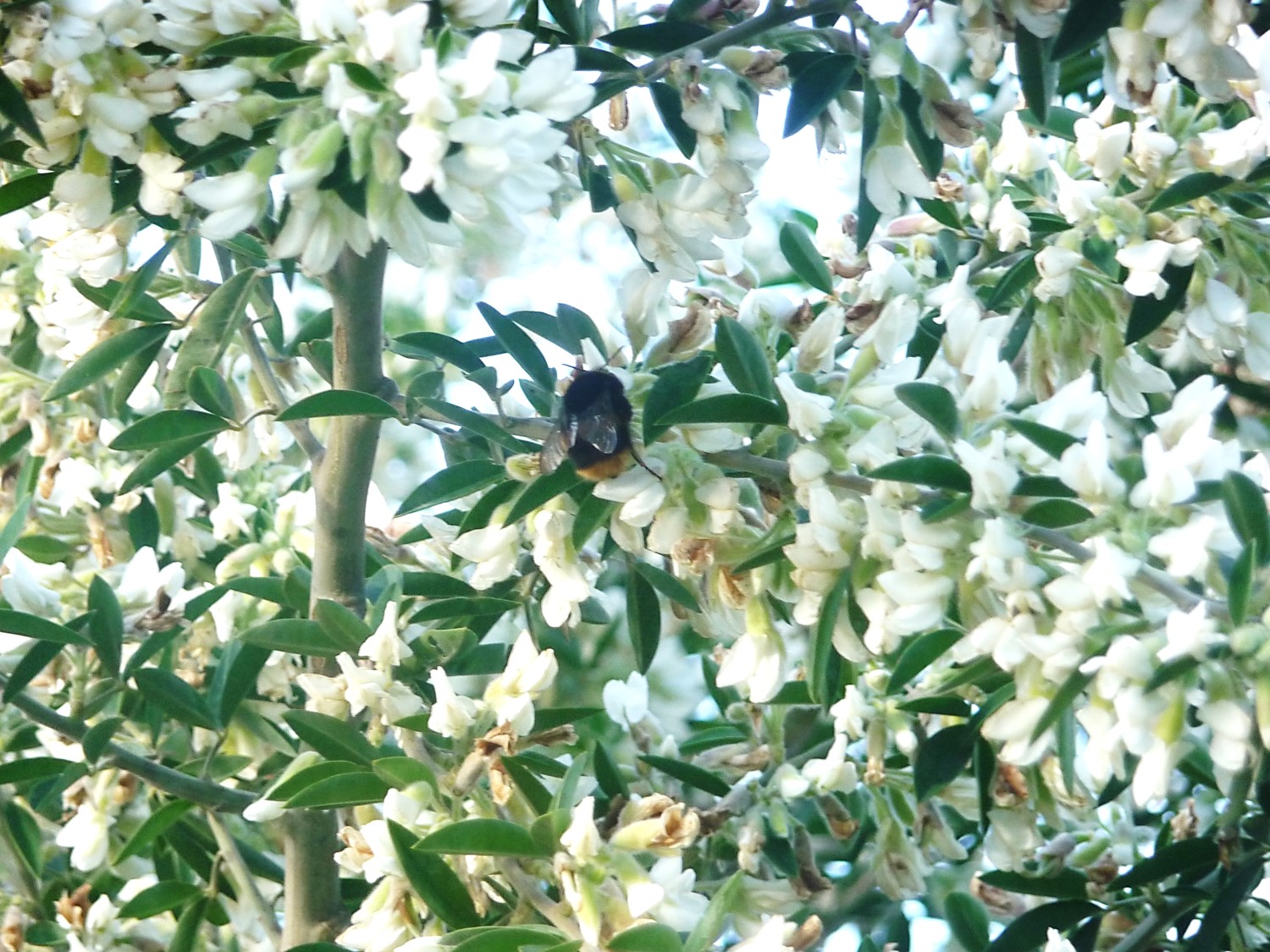Posted on behalf of Dick Lucas
We used to refer to Tagasaste (Chamycytisus palmenta) as ‘tree lucerne’ but in fact this woody legume has few similarities to lucerne (Medicago sativa; alfalfa).
The Spanish name ‘tagasaste’ helps avoid making false assumptions about its management needs. For instance, in contrast to lucerne, tagasaste does not need lime and will thrive in acidic soils with pH values of less than 5.0 (measured in H2O).

Tagasaste comes from the Canary Islands at 28 degrees north of the equator in the Atlantic Ocean. That suggests it would be poorly adapted to most climate zones in New Zealand. However, it thrives in many of our lowland areas. Presumably we have some tagasaste seed lines which originated from higher altitude Canary Island sites where the highest peak exceeds 3000 m.
In the early 1980s Doug Davies (DSIR Crop Research Division) promoted ‘tree lucerne’ for its drought reserve forage, erosion control, nurse crop for native forest regeneration, bee fodder and livestock shelter. A number of tagasaste hedges were planted at that time, often on ten acre blocks. However, like most legumes other than white clover, it needs a champion to promote it. Lately, some questions about tagasaste have been coming in so this blog will re-examine the case for establishing more tagasaste on dryland farms.
As mentioned above tagasaste tolerates acidic soils where clovers (Trifolium species) and definitely medics (Medicago species) such as lucerne will not thrive. In fact, most woody legume shrubs (gorse, broom, tree lupin, tagasaste) can fix nitrogen (N) when growing in acidic, low fertility soils and can shade out herbaceous vegetation (grasses, broad-leaf ‘weeds’ and clovers). Hence gorse and broom, which are difficult to control by grazing with sheep and cattle, are successful colonisers of our acidic low phosphorus (P) soils. In contrast, tree lupin and tagasaste are less successful weeds on sheep and beef farms because they do not tolerate poor drainage and tagasaste does not survive set stocking. Like all legumes the woody legume species require sulphur (S) and P to fix maximum amounts of nitrogen (N) but in general they appear to be able to use P more efficiently than say, white clover.
Tagasaste forage is not as nutritious as clover or lucerne. Grazing with cattle and sheep can result in significant damage to tagasaste. Sheep may display a preference for bark rather than leaves and flowers while the brittle branches may be easily snapped by cattle. Some management strategies to minimise damage include:
- Sowing high seed rates to get up to 10 plants/m2 established
- Grazing the plants at about 1 year old when they are 20 to 50 cm high to encourage branching at low points from the main stem
- Browse taller plants with cattle to reduce plant height for sheep
- Limit browsing to no more than twice a year
- Provision of salt blocks might reduce bark damage
- If the main objective is to provide early spring flowers for bee nectar and pollen then avoid grazing flower buds in late autumn and winter

Honey bees have had a tough time in recent years with parasitic Varroa mites (Varroa destructor) challenging commercial hives and wild hives being wiped out. Added to this, improved methods of gorse control have resulted in reduced early spring feed for all species of bees. Bumble bees appear to have benefited from reduced competition from honey bees. Bumbles relish tagasaste flowers in late winter/early spring and their nests will strengthen if large areas are available. Bumble bees are particularly important for lucerne, red clover (Trifoliun pratense) and arrowleaf (Trifolium vesiculosum) clover seed production. Top flowering annual clovers such as arrowleaf, balansa (Trifolium michelianum), gland (Trifolium glanduliferum) and Persian (Trifolium resupinatum) clovers rely on bees for pollination so that large amounts of seed can be set each late spring/summer to replenish their seed banks for autumn re-establishment.
Tagasaste provides excellent shelter between 2 and 4 m high three years after seed sowing. In areas to be used purely as stock shelter tagasaste should be double fenced so lower branches are not browsed. If hedges need to be cut do it after flowering has finished in late spring/summer. Tagasaste seedlings require a weed free site for their first growing season. Grasses in particular are very competitive with slow establishing woody legumes. Ideally, double spray the site to be sown to accumulate soil moisture and drill in autumn or early spring.
Tagasaste can be sown in larger areas as a reserve feed supply in a stock haven in the lee of a taller shelter belt. Alternatively it can be hand planted on steeper slopes as bee fodder, erosion control and or to provide forage for kereru (New Zealand native pigeon; Hemiphaga novaeseelandiae). Where tagasaste has been established as a drought reserve forage crop we recommend grazing to remove the main stem tips when plants are about 1 year old. This will stimulate branching from the base of the plant. Annual clovers and cocksfoot (orchardgrass; Dactylis glomerata) sown in the autumn after sowing tagasaste in spring will provide a productive under-story. The later flowering clovers will continue to supply pollen and nectar to bees after tagasaste finishes flowering. Routine grazing once a year in mid-summer when the legumes have finished flowering is preferable.
The ‘bad event’ use of the tagasaste ‘stock haven’ in adverse winter/early spring weather will reduce flower production but could save a lot of lambs.
In 1984 at Ashley Dene, the Lincoln University dryland farm near Springston, we demonstrated how a block of about a hectare of tagasaste could be established by sowing seed with a Duncan drill into stony Lismore soil. Unfortunately, the vigour of the tagasaste was reduced when the sheep preferred bark to leaves and flowers. Multiple stemmed clumps of several plants or plants branching from near the base stopped sheep from completely ring barking the tagasaste. Hence we recommend sowing strips of grass/clover alternating with strips of tagasaste. Sow the tagasaste at a high rate (to establish up to 10 plants/m2) and graze the plants in their first year to encourage branching. Of the three grasses sown under the legume shrub, cocksfoot proved to be the most shade tolerant. Tall fescue (Festuca arundinacea or Schedonorus phoenix) and prairie grass (Bromus willdenowii) failed to thrive.
Tagasaste seed can be hand harvested in summer. The black pods left on a plastic sheet in the sun will dry and pop open. Alternatively put dry, brittle pods in a sack and beat it. Seed can be winnowed out of pod fragments in a gentle breeze. Hand harvested seed of most legumes is usually ‘hard’ and only about 10 % of the seed will be ‘soft’ and likely to germinate. The seed therefore needs to be scarified so that the seed coat will become permeable to water. This ‘soft’ seed can imbibe water and germinate normally.
Small amounts of tagasaste seed can be scarified by pouring boiling water over it and allowing the water to cool. Dry and store the seed until sowing. Test the germination of treated seed. If germination is less than 50% consider treating it again.
Another approach is to line a jar with sand paper and vigorously shake seed in the jar, say 30 times. Test the germination after treatment. Larger amounts of seed may be commercially scarified by seed companies in their ‘polishing’ equipment. Drill seed no deeper than 15 mm.
We have not had nodulation failures when sowing tagasaste seed and do not bother with inoculation. It is assumed tagasaste nodulates with the same N fixing Rhizobia strain(s) which team up with gorse and broom.